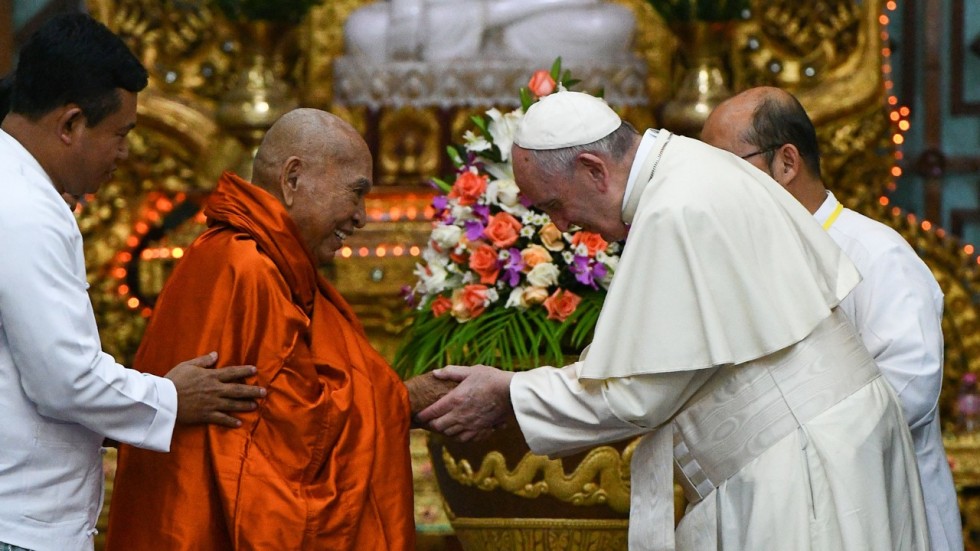Today I wish to celebrate Vesak with an interfaith twist. It’s a public holiday here in sunny, hot Hong Kong, but tomorrow Buddhistdoor Global will be attending an Iftar dinner held by the city’s Muslim community, with guests from the Christian, Baha’i, and Confucian communities. I believe deeply in the maxim of comparative theology (you can really only understand other faiths by being grounded in your own, not jumping from tradition to tradition). Yet as a Buddhist, articulating the spiritual meaning of the fact that non-Buddhist traditions exist (which is a more significant statement than many Buddhists realize) has intellectually nourished me for a long time. Similarly, open-minded and thoughtful theists have a responsibility to figure out why their monotheistic god has created so many influential and venerable civilizations and cultures that don’t believe in him.
My earliest memory of a truly interfaith environment was back in junior high, at an ESF school in Hong Kong. One fond memory I have was how we’d make posters and learn about the religious festivals or holy days that our class’s students and their families celebrated. Given that our school had a most diverse mix of cultures, we’d learn about an entire range of religions; from the Hindu schools and Diwali to Judaism and Hanukkah. Later on I was a boarder at Brisbane Grammar, and as much as I loved my time there, I struggled to understand the school’s lack of a religious studies curriculum (based on the idea that religious studies meant Christian or Bible studies and that BGS was non-denominational). BGS was also extremely diverse, with students meeting mates who were so obviously of different spiritual backgrounds (of course, things might be different now, so do forgive me if my info is outdated).
Perhaps we weren’t old enough back then, but we didn’t have the intellectual tools to grapple with the empirical reality of a multicultural, multi-spiritual environment. Even when this (obviously) wasn’t the main priority of red-blooded boarders and day boys in a single-gender environment, when I raised the issue as a matter of conversation, there was always some genuine residual interest (although it always started with peer banter and ended with peer banter. Such are the halcyon days of teenage existential flippancy).
I studied philosophy and religion at open-minded and pluralistic tertiary environments, so it was inevitable that some sort of intellectual contact with “interreligious relations” would begin. I see this term as the most “umbrella” one, which encompasses not just spiritual but also cultural and social concerns. Interreligious relations could then be narrowed down to interfaith dialogue, which focuses specifically on general exchanges concerning the affinities and differences between religions.
Perhaps the most academically rewarding but challenging forms of interfaith dialogue manifest in what I briefly mentioned above (the academic discipline of comparative theology) and what’s called the theology of religions: an ambitious attempt made by theologians Jesuit and Sufi, Buddhist and Jew alike, to go beyond simply formulating theology for their own faith, but theology that can explain and encompass the entire world’s multiplicity of spirituality.
I’ve listened to several episodes on the excellent podcast The Religious Studies Project (specifically, interviews with Ann Taves of UCSB and Jason Josephson-Storm) about how we live in a post-category, post-“ism” world, and what this means for the religions and theology is significant. However, we inevitably work with terms and names in this conventional world. So while divisions continue to exist in samsara, I see interfaith dialogue as a practical, almost skillful means to bridge those divisions – until, eons into the future, we are all enlightened enough to see through this world’s fog of illusions and understand that divisions don’t exist.

